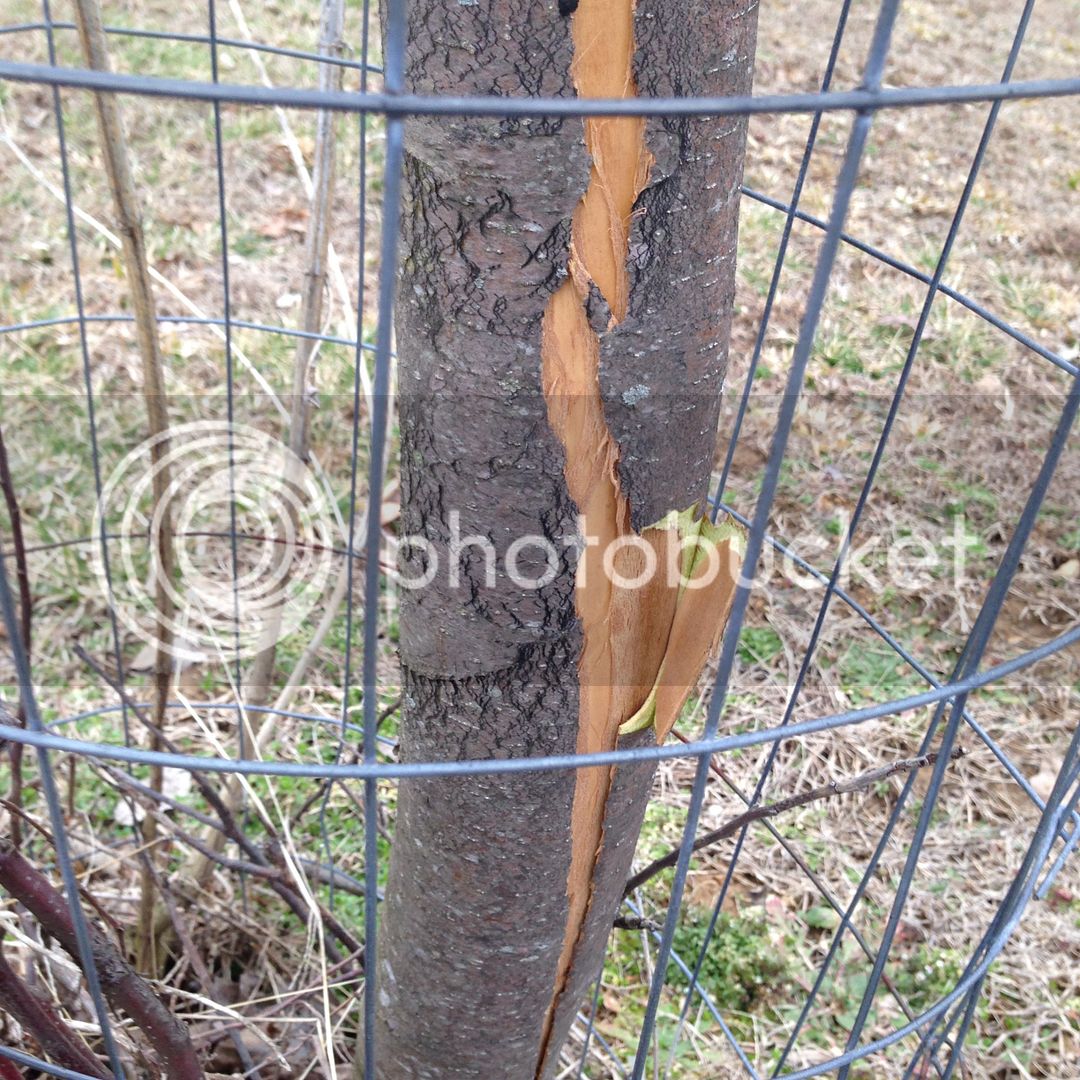Native Hunter
5 year old buck +
I've been around apple trees all my life and never seen anything like this. I have seen tree bark damaged at the ground line on the south side where the sun hits frozen wood but its usually just a small spot at groundline. I generally put a small piece of pipe there to prevent the sun from hitting it, and that has always worked.
This is a Liberty, about 5th leaf on MM106 rootstock. This is how I found it and I bent back that one place on the bark just to see if it was still green, which it is. And, this is on the south side of the tree.
We have been through record breaking cold here this year. No other trees close by have been affected, but I think the others are MM111 instead of 106.
Looking for conclusive thoughts on what happened and what to do.

This is a Liberty, about 5th leaf on MM106 rootstock. This is how I found it and I bent back that one place on the bark just to see if it was still green, which it is. And, this is on the south side of the tree.
We have been through record breaking cold here this year. No other trees close by have been affected, but I think the others are MM111 instead of 106.
Looking for conclusive thoughts on what happened and what to do.
